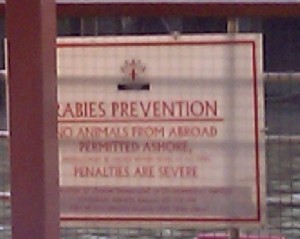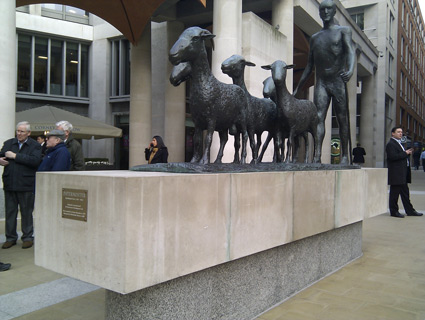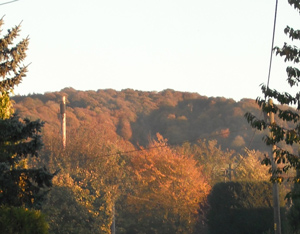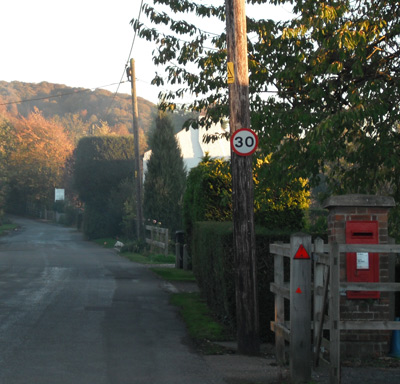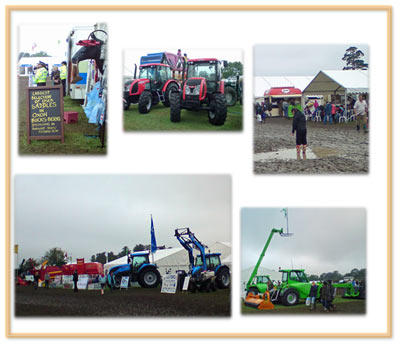I wandered into Waterstone’s in Staines (of past Ali G fame) a couple of weeks ago and was magnetically drawn to a book called Pub Walks in Underhill Country by Nat Segnit, which had the good fortune for a debut novel, to be on the 3 for 2 pile.
It had quite an attention grabbing cover adorned by various pubs signs, which immediately attracted my interest. I had a look through, partly out of dread that the subject matter would be very similar to my work-in-progress, which has a big pub theme. Fortunately it wasn’t — the novel uses a very clever device of parodying the sort of country rambling guides that balance the virtuousness of walking with the promise of indulging in a pint or two at completion and are published in mind-boggling permutations (e.g. Best Walks from Pubs in Bucks, Bucks Country Pub Rambles, 20 Pub Walks in Bucks, etc.).
I always flick through the local editions of these books when I find them, mainly to see check if there’s any that guide walkers through my village — and there’s usually at least one walk that does. Unlike many people, I’m always keen that people do come and visit my local area because it is extraordinarily beautiful in its understated way — if it wasn’t so accessible to London then the scenery might be more valued than it appears to be.
I’ve also written quite a number of pub walks myself, which have been published locally. I was quite surprised to find out that people had actually followed my routes — a local pub landlord took about 15 of his friends on one walk. They’re quite tricky to write as there are only so many variations to make on ‘cross over the field, climb a stile, go through the gate’ and so on.
I can see why it might be real fun for an author to take a character who writes these guides and slip in some personal digressions to this very restricted literary genre and weave a narrative out of this — which is the premise of the book.
My dad is a huge Alfred Wainwright fan and I’ve seen plenty of his idiosyncratic guidebooks and I’ve also seen quite a few Wainwright-inspired programmes, often featuring Julia Bradbury in some shape or form (before she got the Wanderlust and headed off to Germany). Wainwright had something of a curmudgeonly reputation and I seem to remember seeing a documentary about him years ago which suggested his attitudes towards the role of women in society, for one thing, did not share much in common with militant feminism. It’s a very clever idea to make a novel out of the conventions of the walking book genre.
I can see it’s also a very fertile subject to write about — recreational walking is incredibly popular. I saw plenty of hikers this morning as I went for a run that took me (via a bloody big hill) on a short section of the Ridgeway and they were all up there with their Nordic walking sticks. Underhill country isn’t the Chilterns but is apparently around the Malverns somewhere.
I was quite interested in Nat Segnit and Googled him and, strangely, in this era of authors and their social media platforms found very little — no blog or twitter — just some reviews, a couple of interviews and a brief biography on his agent’s page which tells us where he was born and went to university but not much else.
But he does have quite an unusual surname that I was reminded of when I flicked through a book that I’d been meaning to read in the detail it deserves since I bought it as a Christmas present for my sister and then thought was so good that I decided to buy a second copy for myself — The Flavour Thesaurus — by another person called Segnit — Niki Segnit.
I was looking through the acknowledgement page in The Flavour Thesaurus as I now tend to with books I like to try and find out who the agents and editors and so on are. The first person she thanked was her husband Nat who helped with her book ‘while he had his own to get one with’. Â Ah, so these two authorial Segnits were fairly likely to be married to each other.
This might not have seemed a particularly remarkable co-incidence — I guess that writing can be such an anti-social activity that if  some people end up with a partner who’s a writer, especially a debut author who’s writing in time off from the day job, then perhaps a case of ‘if you can’t beat them’ may be the most harmonious solution. But it’s the subjects of the two books that I found particularly fascinating as both are very relevant to themes in my novel. As mentioned above, Nat Segnit’s book alludes to pubs and deals with the escape of the great outdoors. Niki Segnit’s book is a marvellously inventive variation of the endless popularity of all things foodie.
I may even have James in my novel getting hold of The Flavour Thesaurus and treating it like a bible which will give a bit of theoretical grounding to some bizarrely elaborate concoctions he’ll try and put on the menu. The book works a bit like one of those food-and-wine matching guides (I remember a classic line in a Hugh Johnson guide that suggested a two and three-quarter year old Italian Merlot was required to partner sausages — ‘or a red anyway’). But it’s food-with-food combinations that provide the books’ framework.
There’s a flavour wheel with 16 flavour categories (sulphurous, woodland, etc.) and which contain in total 99 ingredients or food components (onion, walnut, etc.). (The flavour wheel is very similar in principle to a painter’s colour wheel — again another connection with the themes in my novel.) The book is then structured into pairings of the these components — so you look up something you like the taste of — say horseradish — and the book lists some interesting ingredients to pair with horseradish — oysters or beetroot, for example. There are some very interesting pairings indeed but I won’t spill the metaphorical beans by listing them here.
This structure is also remarkably clever as it accommodates a serendipitous mix of scientific research on flavour of the sort Heston Blumenthal is a fan (Niki Segnit has a background working for big food companies), impromptu recipes and, my favourites, her own anecdotes and opinions. There’s a great story about her driving through Italy with a boyfriend with whom her relationship was souring which comes under the unlikely heading ‘Globe Artichoke and Bacon’. She may even have convinced me that the peanut, like its friend, the single kernel of sweet corn, is an ingredient that has some culinary merit and not just a cheap product of the American agro-industrial machine.
Niki Segnit is extraordinarily well read on her subject — with a huge bibliography of cookbooks and other food reference books. She references quite a few authors that are on my shelves, from salad and vegetable guru, Joy Larkcom to domestic goddess, Nigella Lawson. However, what infuses the the book, despite its lack of illustrations or sexy photographs of styled food, is a genuine love of food and the sensual pleasures it offers and, as such, a dog-eared copy would certainly merit a place in my fictional character’s kitchen.



